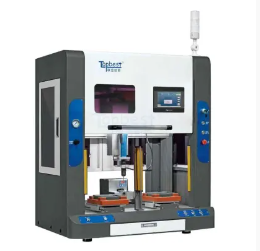What is an automatic screw machine and how does it work?
In the world of machining, automatic screw machinesstand out as versatile tools capable of producing complex parts with precision. This article is your gateway to what automatic screw machines are, how they work, their types, and their vital role in various industries. Let's take a deep dive into the fascinating world of these mechanical marvels.

Introduction about automatic screw machine
The automatic screw machine is a special lathe, which is mainly used to process small and medium-sized parts with bars of various sizes. These machines are equipped with multiple slides and spindles, each of which can accommodate various tools such as drills, forming tools, milling cutters, taps, dies, etc. This versatile setup enables the automatic screw machine to efficiently produce high volumes of turned components with exceptional precision.
The core component of the automatic screw machine
An automatic screw machine consists of several key components that work together seamlessly to accomplish the task of fastening screws:
a. Screw feeder:
The heart of the machine is the screw feeder. This assembly stores and provides the screws to be tightened. The feeder ensures a continuous and controlled supply of screws, preventing jams or interruptions in the assembly line.
b. Screwdriver unit:
The screwdriver unit is responsible for picking up the individual screws from the feeder, placing them correctly on the target position and fastening them securely. It usually consists of a spindle, drill bit or driving tool and the mechanism for applying the necessary torque.
c. X-Y axis system:
For precise positioning, the automatic screw machine is equipped with an X-Y axis system that allows the screwdriver unit to move horizontally and vertically. This movement ensures that the screw is placed exactly where it is intended.
d. Control system:
The control system acts as the brain of the machine. It coordinates all functions of the machine, including screw feeding, positioning, tightening and error detection. Modern automatic screw machines are often equipped with advanced software for programming and monitoring operation.
The efficiency of automatic screw machines is further emphasized by their ability to be supervised by an operator who primarily performs setup and changeover. Multi-spindle screw machines take productivity to new heights as each spindle operates independently at the same time. These machines excel in precision due to the integration of the guide bush and collet, which reduces the gap between the workholding and tool, increasing rigidity and precision.
Operation of automatic screw machine
The following is a step-by-step breakdown of how an automatic screw machine works:
Step 1: Screw Feeding
The process starts with the screw feeder. Screws are stored in a hopper or container, and an internal mechanism ensures that one screw at a time is fed into the screwdriver unit.
Step 2: Screw Positioning
The X-Y axis system precisely positions the screwdriver unit at the target position where the screw needs to be tightened. This positioning is critical for accuracy.
Step 3: Screw Pickup
The screwdriver unit lowers and picks up individual screws from the feeder. The screws are securely held by the driving tool.
Wide range of applications: automatic screwdriver shines
The versatility of automatic screw machines knows no bounds, making them indispensable in every industry, especially when machining small or thin parts. Notable applications include:
axis
pins
knob
screw
bolt
Orthotics
Medical Device Components
Conclusion: Redefining Precision
In the world of manufacturing, automatic screw machines represent the epitome of precision and efficiency. Their ability to manufacture complex components quickly and accurately makes them indispensable in a variety of industries. As you explore the world of machining and fabrication, consider harnessing the power of automatic screw machines to increase your production capabilities and achieve unparalleled precision in your projects.
277
0
0

Comments
All Comments (0)